Discover 5 hidden attractions, cool sights, and unusual things to do in Leominster (United Kingdom). Don't miss out on these must-see attractions: Leominster Museum, Priory Church, and Grange Court. Also, be sure to include Mortimer's Cross Water Mill in your itinerary.
Below, you can find the list of the most amazing places you should visit in Leominster (England).
Table of Contents
Leominster Museum
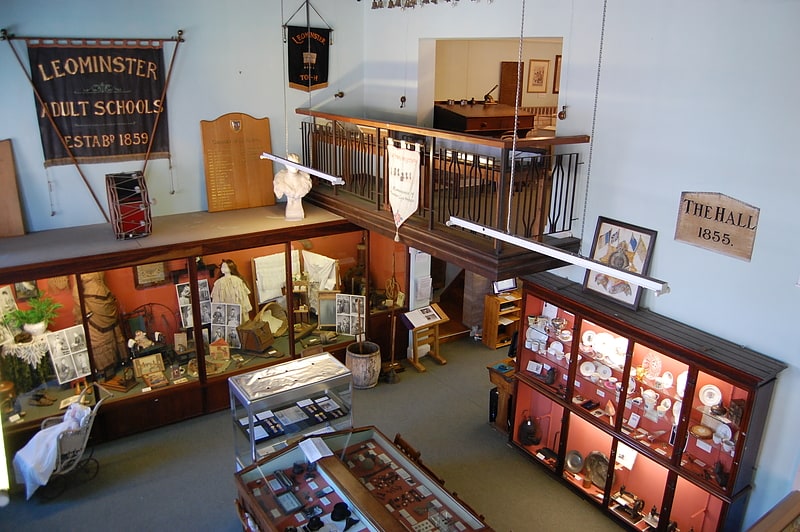
Museum in Leominster, England. Leominster Museum, formerly known as Leominster Folk Museum, is an independent, volunteer-run, museum in Leominster, Herefordshire, England.
The museum, which opened in 1972, owns and displays a collection of artefacts relating to the local area, including banknotes and cheques from the Leominster & Herefordshire Bank, early local postage marks, material from the Leominster and Kington Railway, the Bronze Age Aymestrey burial, and a complete cider mill. It also has a number of works by the Leominster-born artist John Scarlett Davis, including an 1828 self-portrait, and a book of 173 sketches, purchased for £11,000 at auction at Christie's in March 1979.
In 2014 the museum obtained an £8,900 Heritage Lottery Fund grant. for a project called "Rifles and Spades", which commemorated the local effects of World War I. The project, which finished in April 2015, comprised three Open Days at the museum, three public talks, a commemorative event at Leominster Priory attended by 240 people, an exhibition called 'Our Story' which was in Leominster Library for two months before touring various village and school locations, and finally a linked set of education packs that are available to schools.
In addition to its permanent displays the museum aims to stage a different temporary exhibition each season. In 2015 there were in fact two: one on the History of Morris Dancing and Mumming in Leominster, entitled 'Here be Dragons!', and 'An Unlikely Champion - A History of Bill Bengry and Bengry Motors'.
The museum building, on Etnam Street, was originally built in 1855 as a mission hall for workers constructing the local railways.[1]
Address: 16 Etnam St, HR6 8AQ Leominster
Priory Church
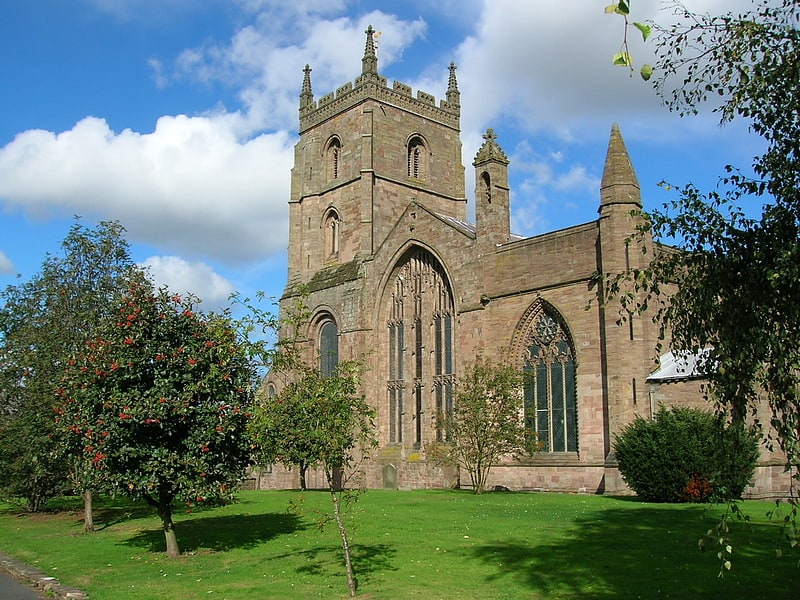
Anglican church in Leominster, England. The Priory Church is an Anglican parish church in Leominster, Herefordshire, England, dedicated to Saint Peter and Saint Paul. The building was constructed for a Benedictine Priory in about the 13th century, although there had been an Anglo-Saxon monastery in Leominster, possibly on the same site. In 1539 the east end of the church was destroyed along with most of the monastic buildings, but the main body of the church was preserved.
Quatrefoil piers were inserted between 1872 and 1879 by Sir George Gilbert Scott.[2]
Address: 26 Church St, HR6 8NH Leominster
Grange Court
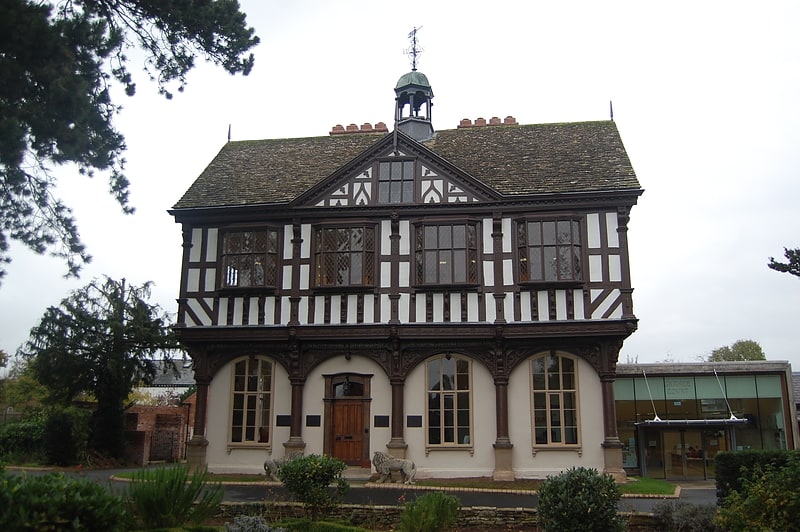
Grange Court is a former market hall in Leominster, Herefordshire, England. It was built in 1633 by John Abel, and moved to its present location in 1859. It was then used as a private house until the 1930s, and is now once again a civic building.[3]
Address: Leominster, Pinsley Road
Mortimer's Cross Water Mill
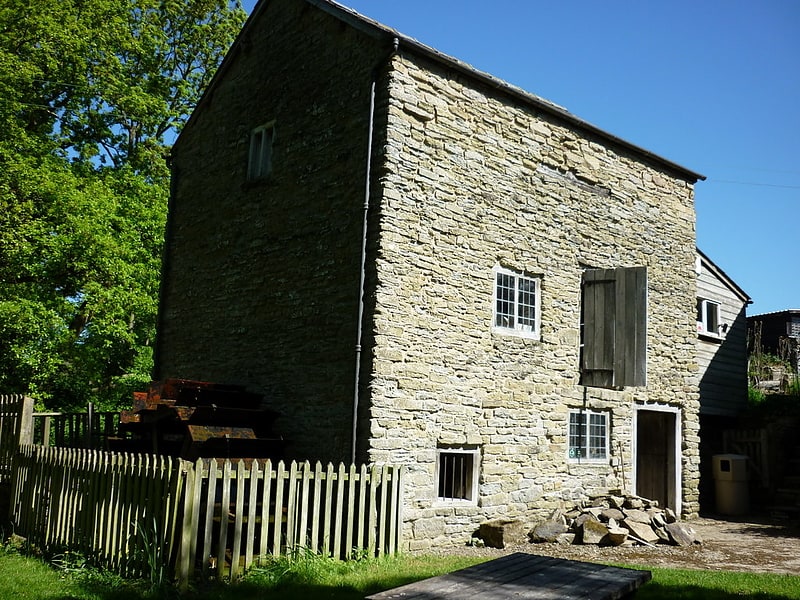
Historical landmark in England. Mortimer's Cross Water Mill is an 18th-century watermill located on the River Lugg, 11 km northwest of Leominster, Herefordshire, England. It is owned by Historic England and is in partial working order.[4]
Address: Mortimers Cross, HR6 9PE, Leominster
Leominster nunnery
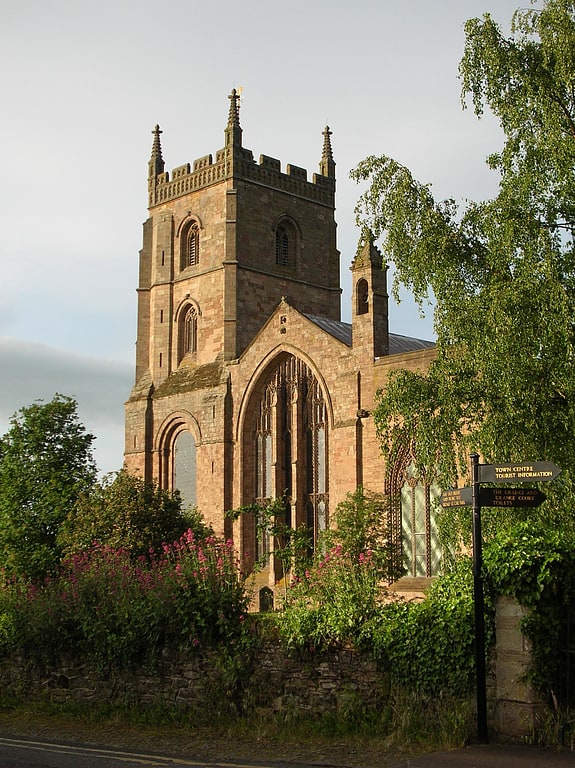
Leominster nunnery was an Anglo-Saxon nunnery at Leominster, Herefordshire, England. Founded in the ninth century, the nunnery is known to have been active in the eleventh century. The exact location of the nunnery is not known, but it may have been the site later occupied by Leominster Priory, a twelfth-century foundation.[5]